[Notebook] Cloud Recovery within MyASUS in WinRE – Introduction | Official Support | ASUS Global
[Notebook] Cloud Recovery within MyASUS in WinRE – Introduction
The Cloud Recovery function allows you to restore your computer’s operating system in just a few steps without installing drivers.

Table of Contents
1. System Requirment
- You can click here to find out if your Asus laptop supports Cloud Recovery within MyASUS in WinRE
- If the initial system is Windows 11 Home S mode, this feature is not supported
- Local backup require an external storage device
- Cloud Recovery require LAN or Wi-Fi network
- Power supply
Back to Table of Contents
2. How to open [MyASUS in WinRE]
(1) After pressing the power button of your computer, quickly press F12 several times to enter [Choose an option] Interface. Click [Troubleshoot] then click [MyASUS in WinRE]. Function key required may vary depending on PC model. Some models use the F9 key instead.
From within Windows-Click Start, then click Power, then press and hold the Shift key while clicking Restart. Your PC will shut down and then reboot into WinRE. Once you are in WinRE, select MyASUS in WinRE.
If MyASUS in WinRE is not found when opening this interface, the computer does not support this function.

(2) If you are entering MyASUS in WinRE for the first time, the Privacy Notice pop-up window may appear, please click [Agree].
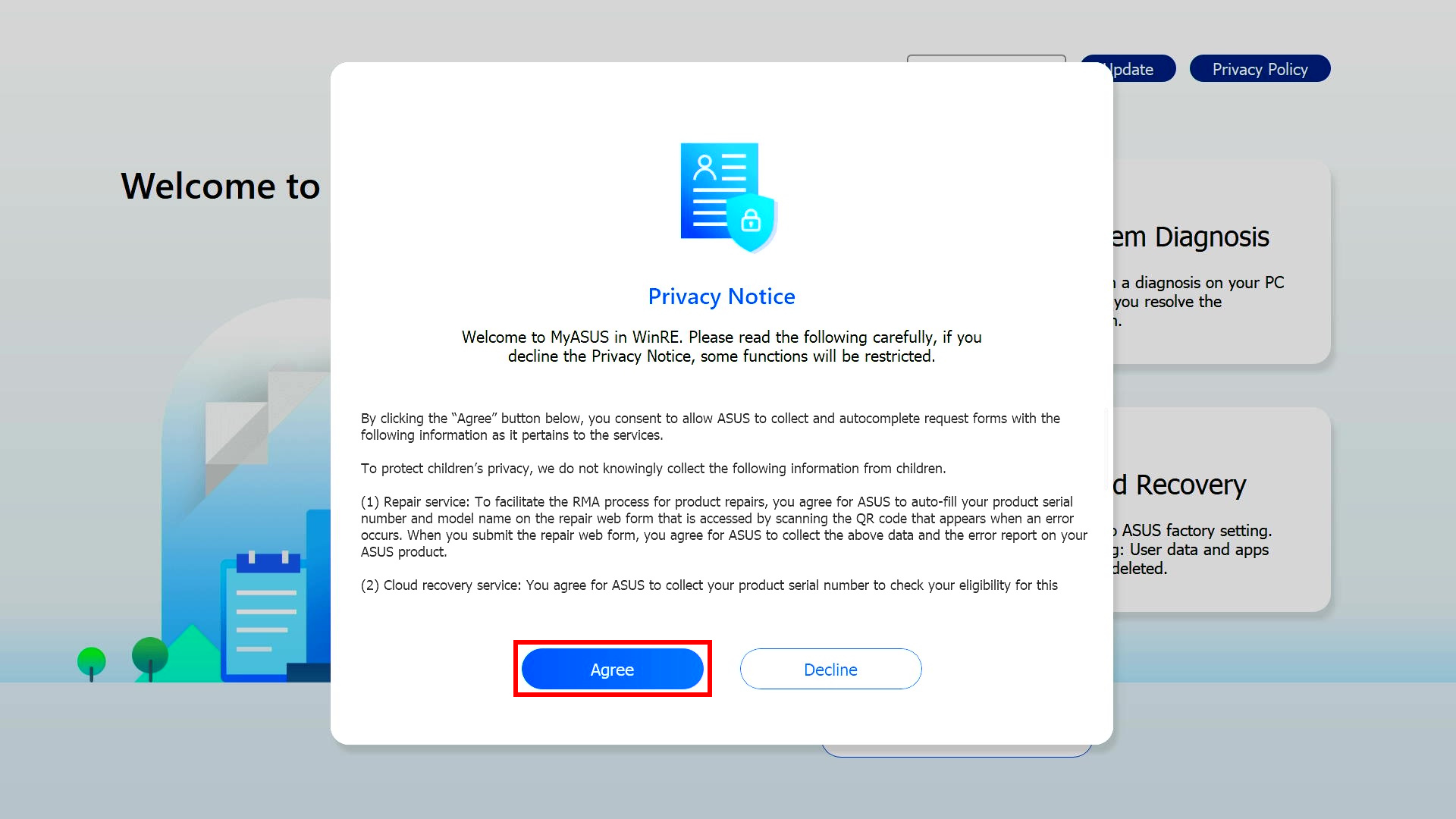
Back to Table of Contents
3. Execute Cloud Recovery
(1) Click ①[Cloud Recovery].

(2) Cloud Recovery requires network support. Select ②[Wireless network] and click ③[OK]. (Cloud Recovery supports LAN network connections. If your computer does not have an RJ45 interface, you will need to use ASUS’s RJ45 to USB Dongle. Currently non-ASUS RJ45 to USB Dongle may not be supported because of compatibility)
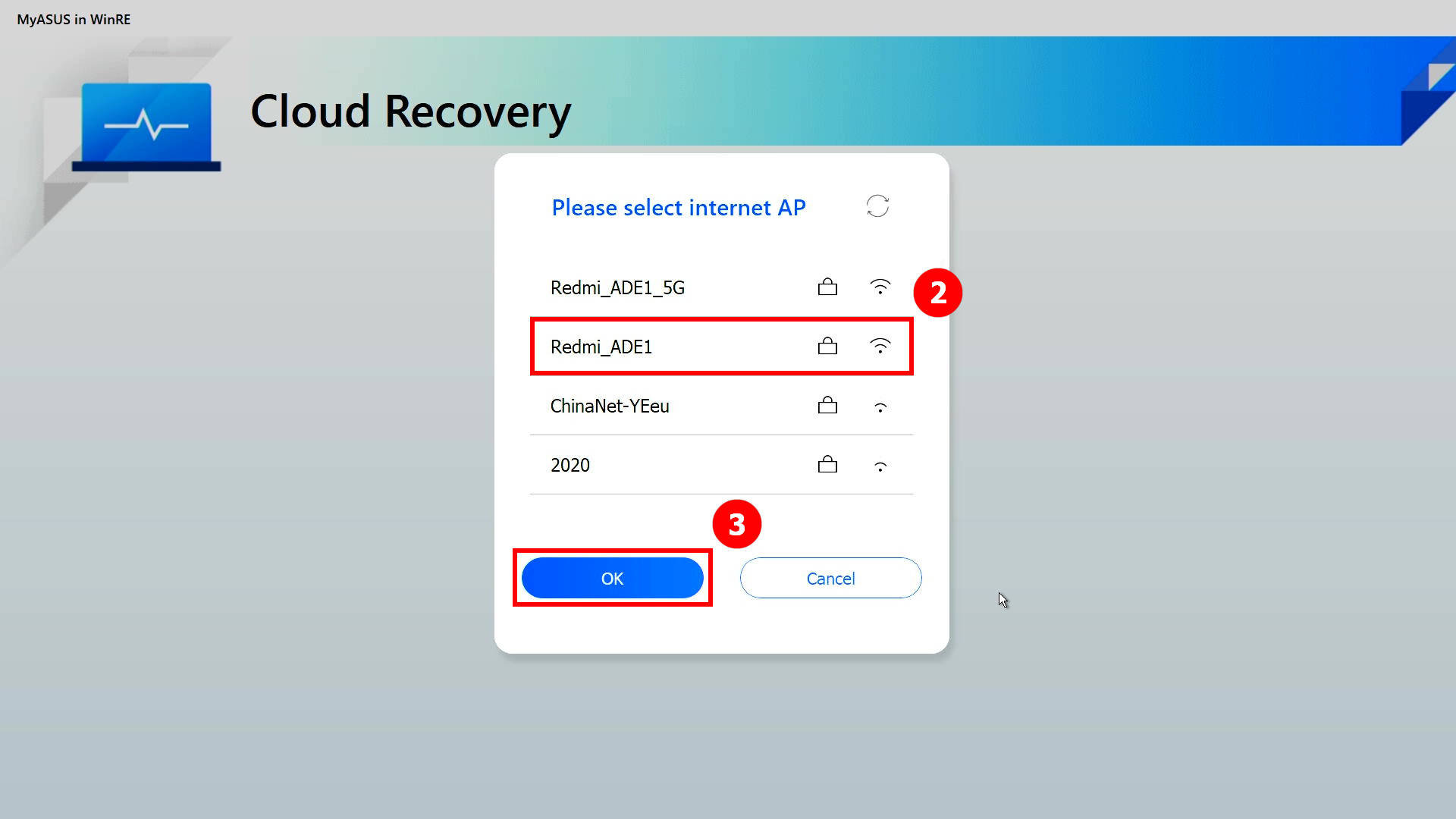
(3) Enter the wireless network ④[password] and click ⑤[OK].
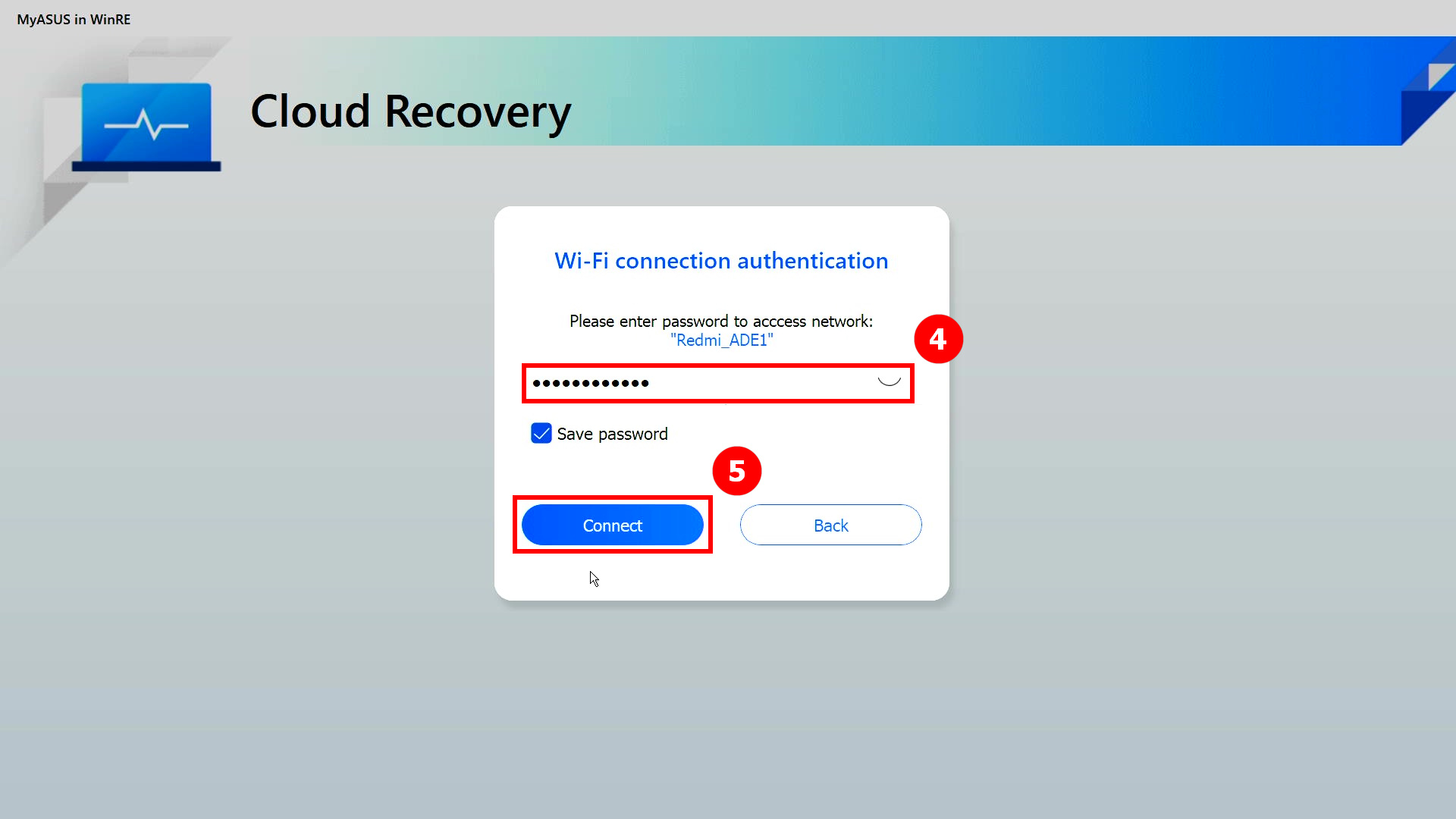
(4) You will be asked if you need to back up your files first, click ⑥[OK]. If you don’t need to back up your data, click Cancel and go to 3-(8) article to continue reading.

(5) Click your ⑦[External Storage Device], and then click ⑧[OK].
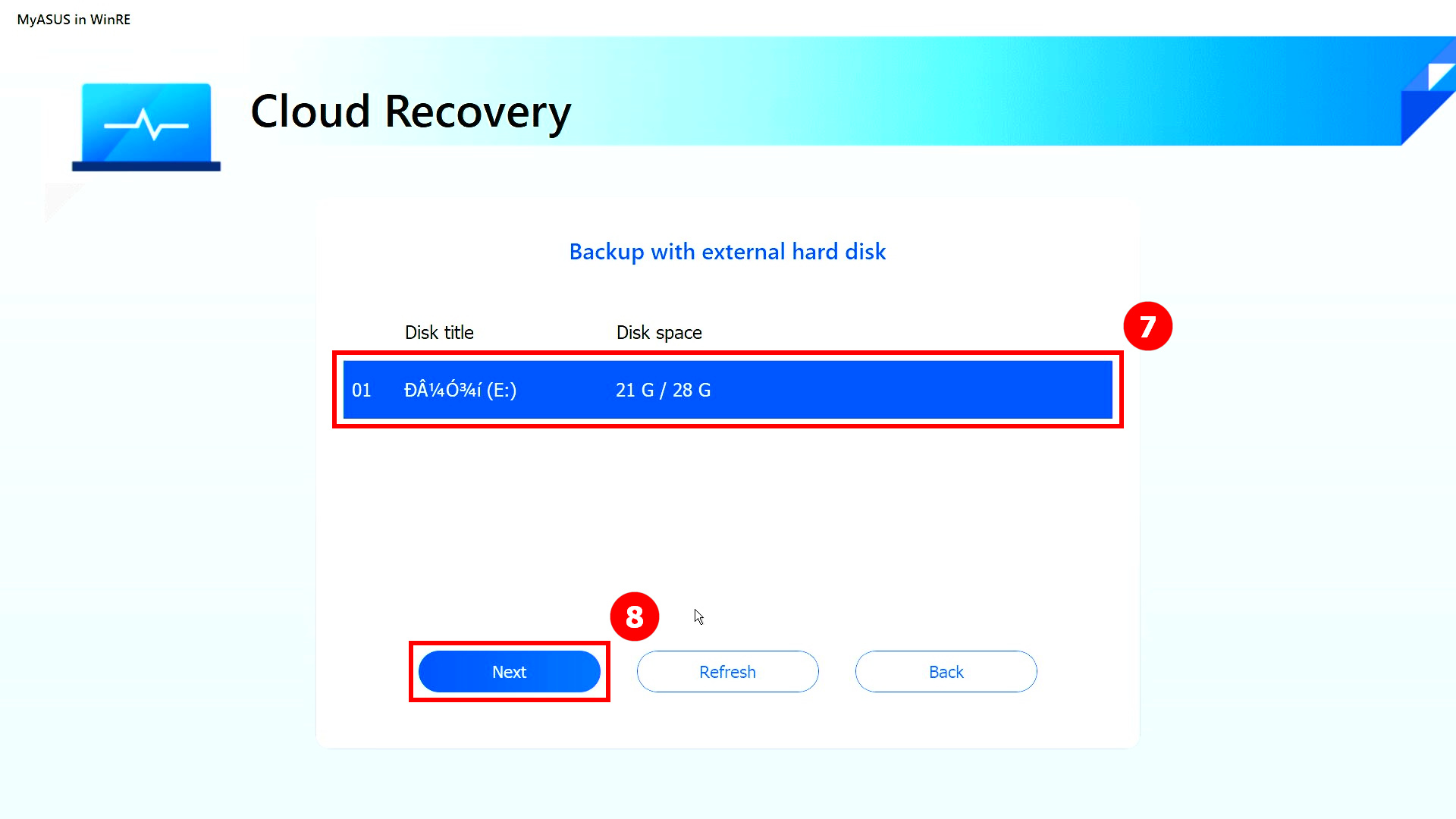
(6) Click ⑨[File] that you want to back up, and then click ⑩[OK]. Do not remove external storage devices or remove power sources while backing up data.
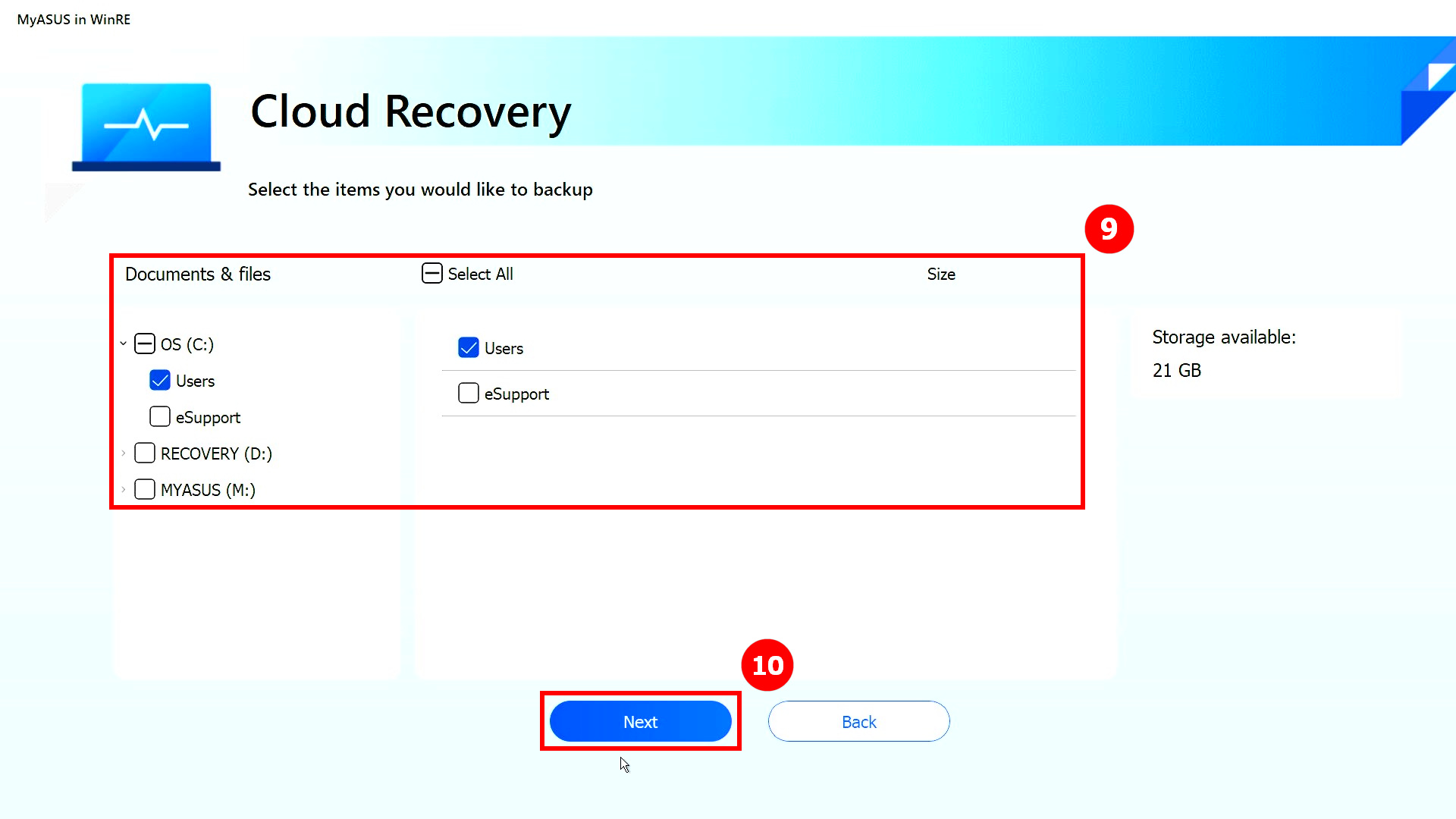
(7) Backup progress complete, click ⑪[Next].
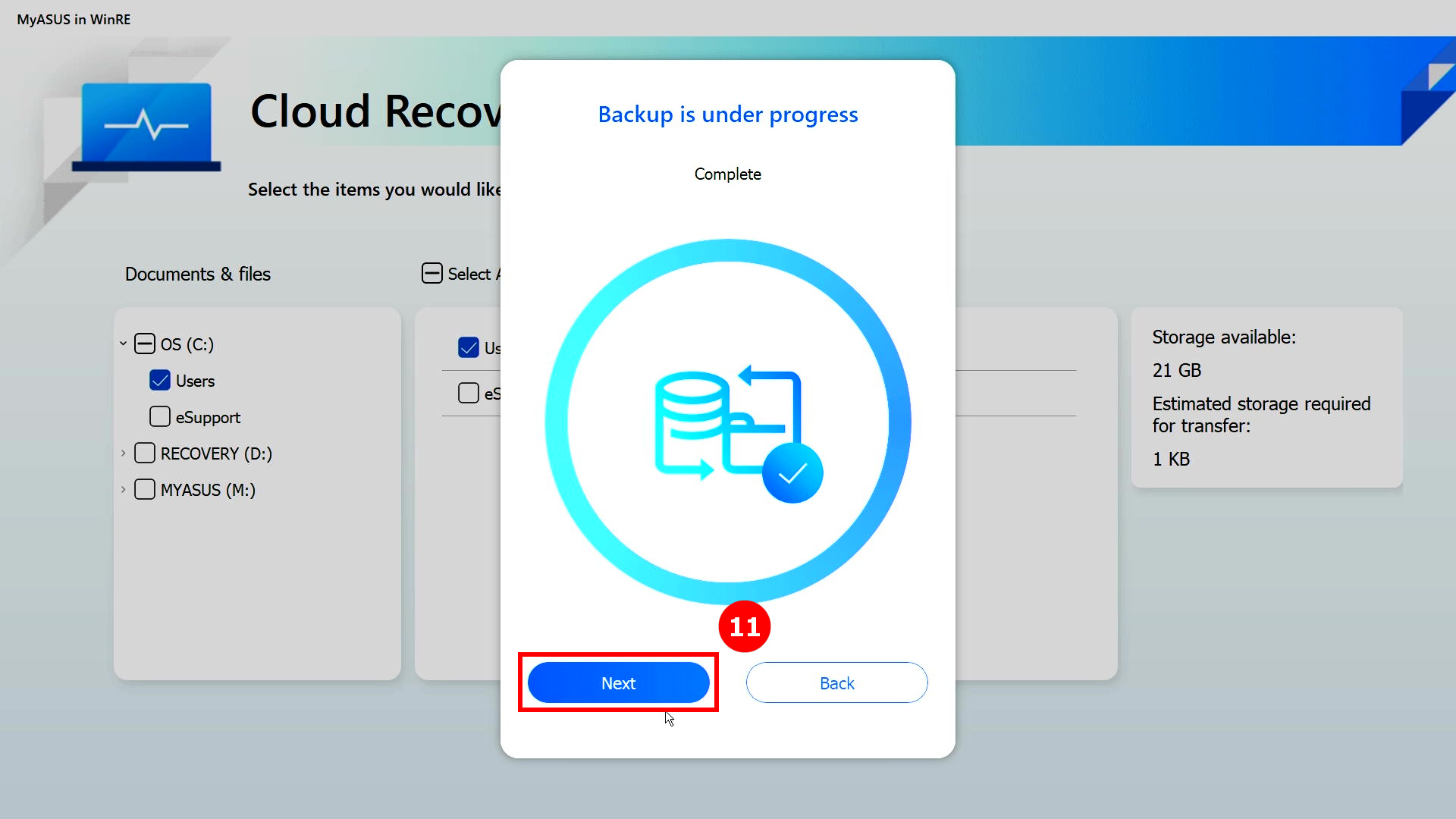
(8) Backup complete. Do you want to reset the whole system back to its default settings? Click ⑫[OK] and the system will automatically download the files that the computer needs to install from the cloud.
Please note: When you click OK, Cloud Recovery will restore the storage device where the OS is stored to its original state, which means that all data on the storage device will be erased, regardless of whether you partition the storage device or not.
- If your computer can still access Windows, use an external storage device to back up your data or reference [Notebook] MyASUS – Switch and Recovery, or use Windows built-in backup features [Windows 11/10] Backup and Restore your files (File History), or use cloud storage to back up your data or reference [Windows 11/10] OneDrive or go to ASUS WebStorage to get a cloud backup.
- If your computer won’t be able to access Windows and you have important data that hasn’t been backed up yet, please contact the ASUS Service Center for help.

(9) The Cloud Recovery program starts, please keep the network connected and do not remove the power, this process will take about 1~3 hours, depending on your network quality and computer configuration.
During this time, it is normal that the computer may restart several times or have a black screen. Please do not operate the computer, be patient.
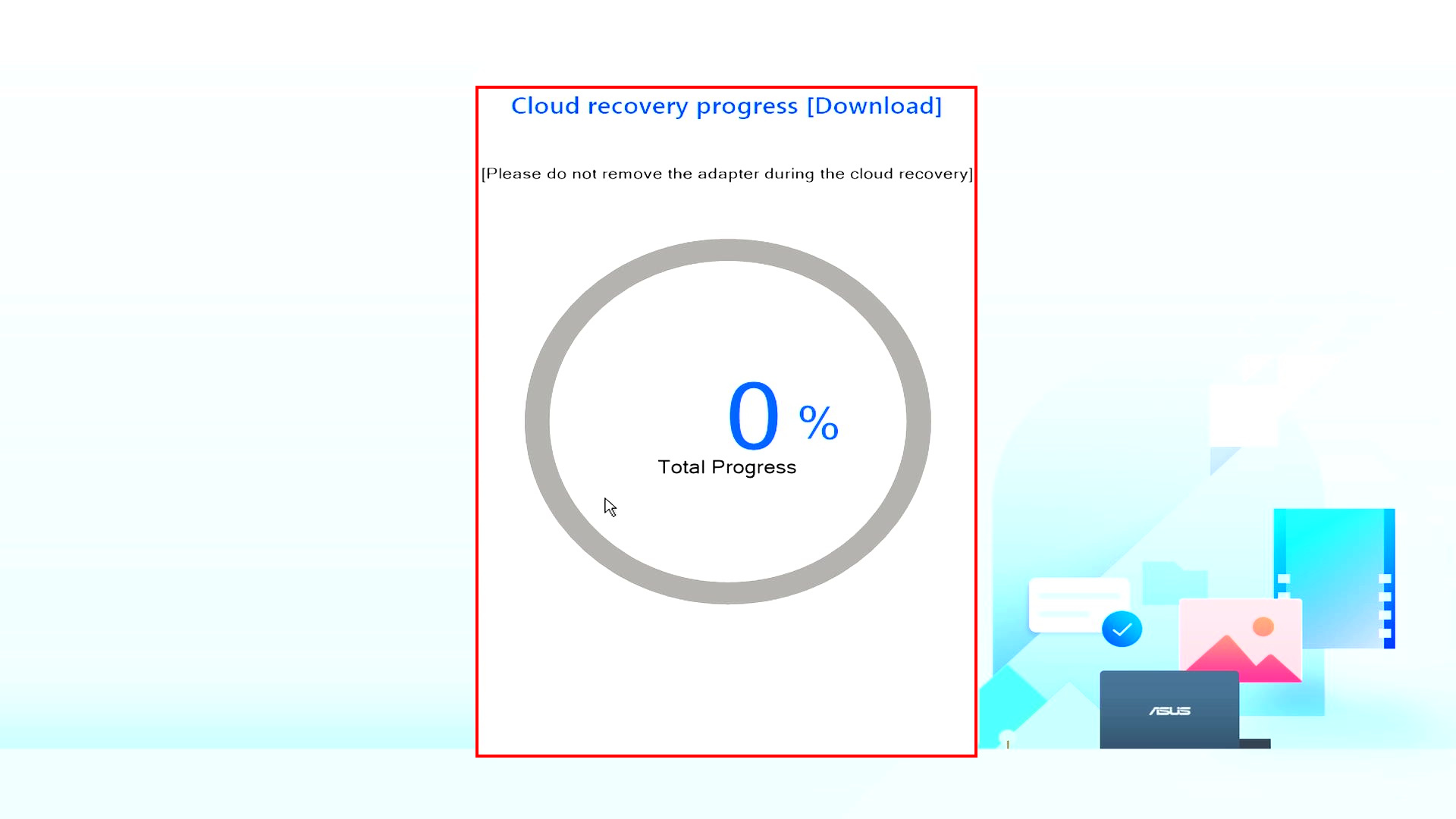
(10) Cloud Recovery succeeds and your computer has been restored to factory condition.
If your computer is unable to complete Cloud Recovery, please contact the ASUS Service Center for help.
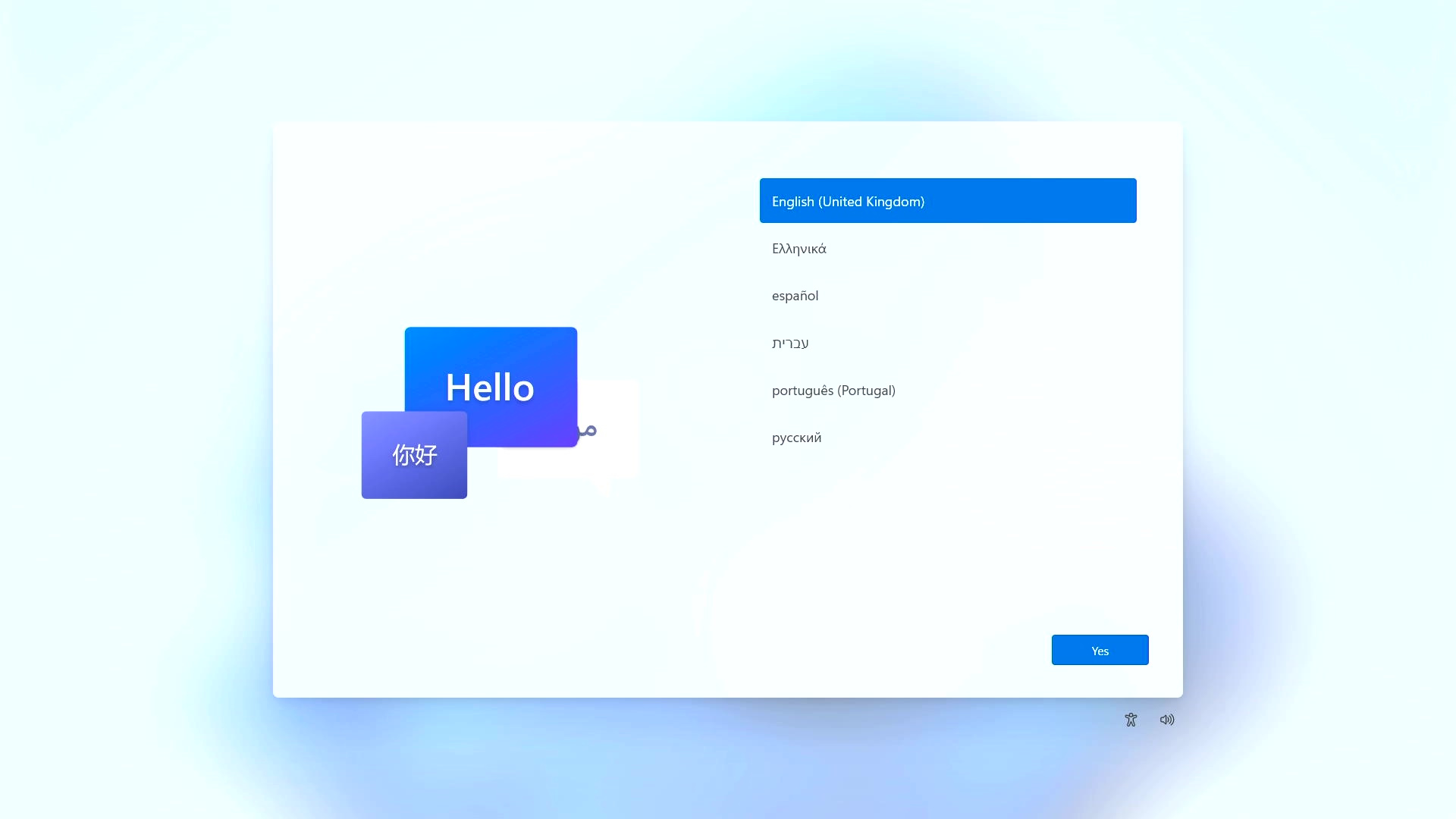
Back to Table of Contents
4. FAQ
Q1: What happen if Cloud Recovery stops due to slow or unstable internet connection?
A1: When your computer loses its internet connection, you will be returned to the initial page of Cloud Recovery and you will need to re-execute Cloud Recovery.
If your Internet connection is unstable and you can’t perform Cloud Recovery, it is recommended that you send your computer to repair center.
Q2: The process for recovery will be totally unattended from start to end?
A2: Yes, you can take care of other things when the Cloud Recovery progress starts, so be patient and wait for the Cloud Recovery to end.
Q3: Will Cloud Recovery change the HDD or SSD partition?
A3: Yes, Cloud Recovery restores your storage device to its original state, regardless of whether the storage device has partitions or not. So before you start Cloud Recovery, back up your storage device data first.
Q4: If my computer has two or more storage devices, will the data in these storage devices be deleted?
A4: If your computer has two or more storage devices, using the Cloud Recovery function in MyASUS in WinRE will only delete the data in the storage device where Windows is stored.
Q5: Can I install Windows on the storage device I purchased using the Cloud Restore feature? (Non-computer original storage device)
A5: Because Cloud Recovery within MyASUS in WinRE feature is installed in storage device, you cannot use it after you replace the storage device. You can install the Windows using the Cloud Recovery feature in MyASUS in UEFI, click on: [Notebook] Cloud Recovery within MyASUS in UEFI – Introduction
Q6: Under what circumstances is it recommended to perform the Cloud Recovery function?
A6: You can use Cloud recovery to restore your computer to default settings:
- When you can’t enter Windows and there’s no way to fix it.
- When replacing a Windows storage device.
- When you want to completely restore your computer to Default Settings.
Q7: If you cannot use MyASUS in WinRE.
A7: You can use the Cloud Recovery function in MyASUS in UEFI, click: [Notebook] Cloud Recovery within MyASUS in UEFI – Introduction
Q8: If you want to know about the System Diagnosis function in MyASUS in WinRE.
A8: Please click: [Notebook] System Diagnostics within MyASUS in WinRE – Introduction
Back to Table of Contents






